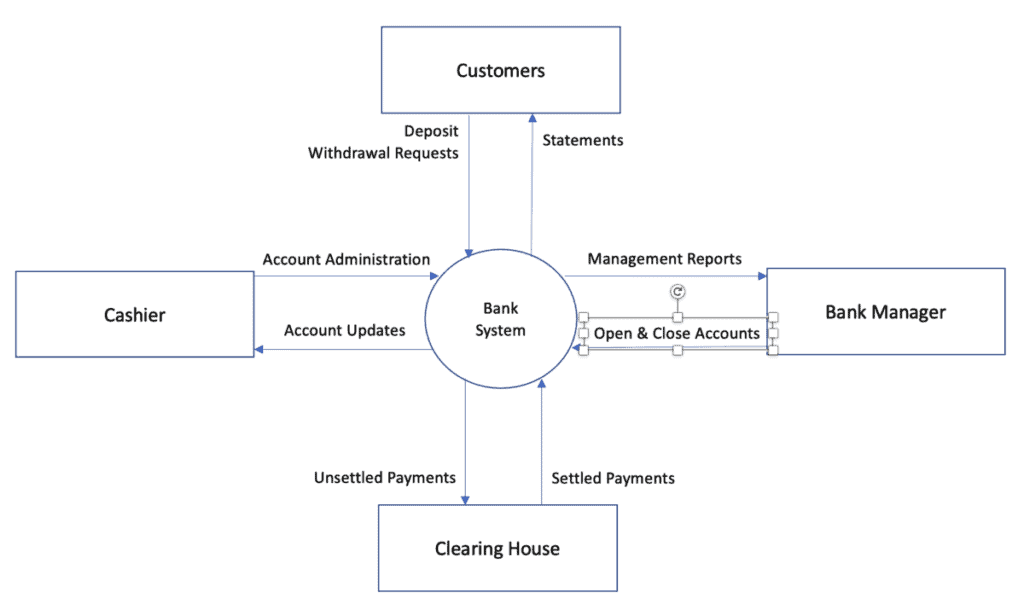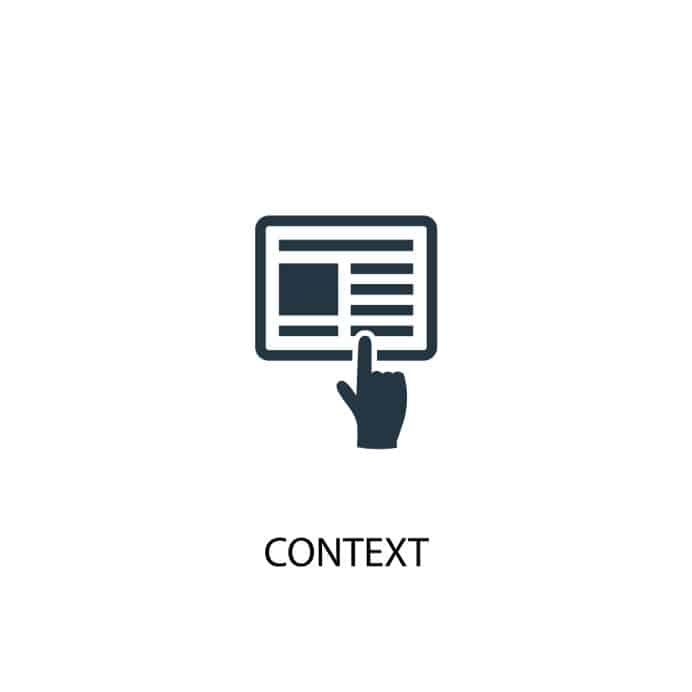The idea of a context diagram has appeared in various structured approaches in software development over many years.
over many years.
A context diagram is a good technique to explore and represent the business context which an existing system operates, or a target system will operate. It also provides a first step towards defining the scope of the target state system.
The system itself is regarded as a black box – in software engineering terms a black box is a is a device, system, or object which can be viewed in terms of its inputs and outputs, without any knowledge of its internal workings. Its implementation is opaque or “black.” The system should be treated as a ‘black box’, the internal details of which are not important at this level of abstraction.
– in software engineering terms a black box is a is a device, system, or object which can be viewed in terms of its inputs and outputs, without any knowledge of its internal workings. Its implementation is opaque or “black.” The system should be treated as a ‘black box’, the internal details of which are not important at this level of abstraction.
Table of Contents
What Is A Context Diagram And Why Is It Required?
The essential idea of a context diagram is that it shows a proposed (or existing) IT system in relation to the wider world – to the people and other systems with which it must interface.
The basic technique is simple. The proposed system is drawn as a circle in the centre of the diagram. Around it is positioned the ‘actors’ with which it is expected to interact by receiving input or providing output.
- The circle represents a process, which in the context of a context diagram means the whole of the proposed system.
- The rectangle shape represents an external actor, which is any external system or human actor that interacts with our system. The context diagram focuses on external actors rather than internal processes.
The context diagram sets out at the very highest level the system boundary, so that we can determine what is inside the system (hence inside of scope – but not yet modelled) and what is outside the system (and hence out of scope).
The context diagram is typically be included in the requirements document (such as business requirements documents , vision documents
, vision documents ) to get agreement on the proposed system scope from both technical and non-technical stakeholders. As such, this diagram uses simple shapes and plain language.
) to get agreement on the proposed system scope from both technical and non-technical stakeholders. As such, this diagram uses simple shapes and plain language.
Example Of Context Diagram
The following is an example of a context diagram. The system in scope is the bank system. The external actors include both human actors (i.e., customers, cashier, bank manager) and an external actor (clearing house).

In this example of a context diagram, the diagram helps convey the following information to provide context.
Customers can send deposit and withdrawal requests to the bank system and can receive statements from the bank system. Bank managers can open and close accounts using the bank system. Bank managers and can receive management reports the bank system. Unsettled payments are sent from the bank system to the clearing house for settlement and the clearing house sends the settled payments to the bank system.
The cashier and perform account administration for (the customer) using the bank system and the bank system provides the cashier with account updates.
Note, that whilst, the context diagram shows the kind of data that is exchanged between the system in scope and the external interfaces, it implies nothing at all regarding the sequence in which those data exchanges take place.
How To Draw Context Diagram
The following are the key steps in drawing a context diagram – this may be done using various elicitation techniques .
.
- Draw the system or product in scope at the centre of the diagram. There should only be one system or product per context diagram as the focus of scope.
- Identify all external actors to the system or product.
- Identify key data flows from the interfaces to the system or product.
- Review and refine the context diagram with team members and stakeholders.
What Is A Context Diagram In Agile?
A context diagram in an agile project is a useful technique that a business analyst or product owner / product manager can use.
During the product discovery or product inception phase it is important to have a perspective of the context of the product that is to be built and to understand any associated interfaces to the product. The internal workings of the product would then be built using user stories to describe what is expected.
What Are The Benefits Of A Context Diagram?
The following are some of the benefits of a context diagram.
- Can help the business analyst limit the scope of analysis to what is important.
- Identify key data/information flows.
- Identify key interfaces.
- Helps to scope out the elicitation effort.
- Reduce risk during the discovery / inception phase by understanding scope.
- Provides the basis to explore further using techniques such as user stories, use cases.
- Avoids the business analyst from getting initially bogged down into detail when interacting with stakeholders.
- Enables stakeholders to see the big picture.
- An excellent tool for facilitating brainstorming scope.
- It doesn’t require technical skills or knowledge to understand a context diagram.
Conclusion – Context Diagram
A context diagram is useful simple technique that has been around for a long time in structured methodologies The context diagram is still useful in an agile or product setting – whereby there is a need to see the big picture and relay this to stakeholders during product discovery / inception.


